Beautifully nostalgic photos of cruising through the decades
Cruising through time
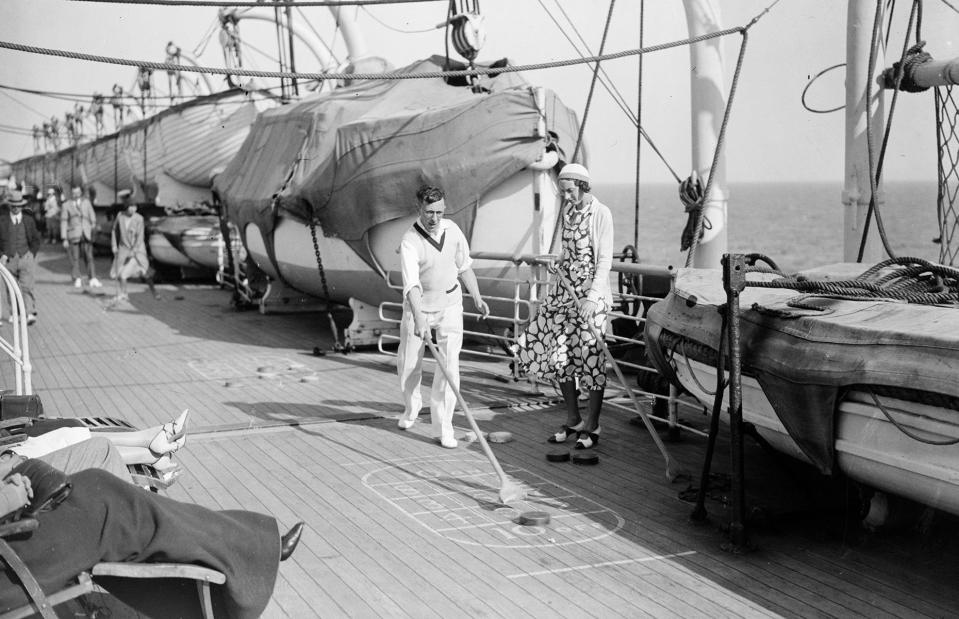
Fox Photos/Getty Images
From the earliest transatlantic voyages and golden-age ships to today's glittering juggernauts, we reveal 32 nostalgic images that chronicle cruise history.
1830s: the very beginnings
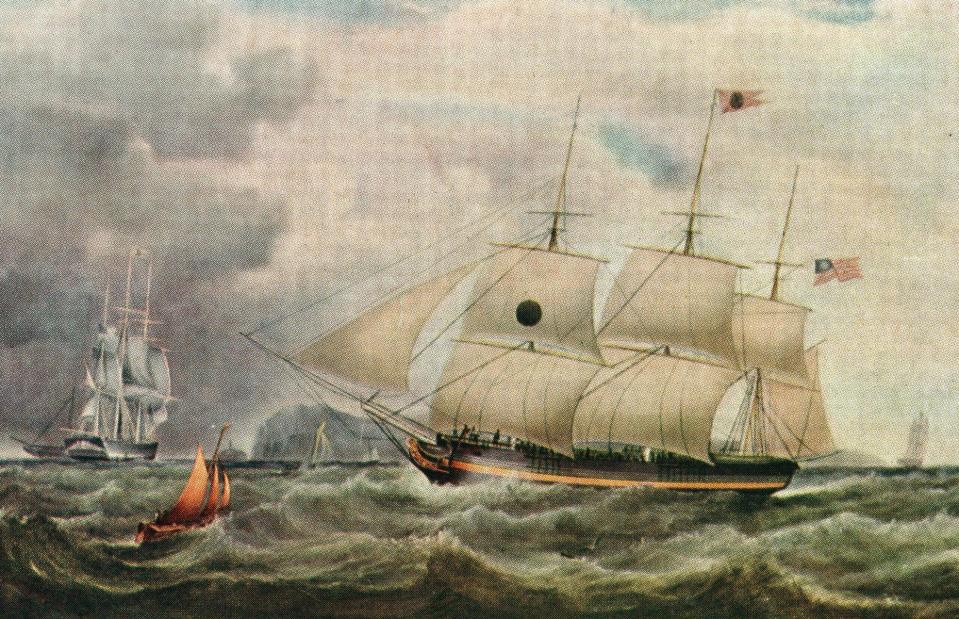
Hulton Archive/Getty Images
Before passengers began taking to the high seas, now-famous cruise lines principally operated as mail-shipping services. P&O, then the Peninsular Steam Navigation Company, won a contract to deliver mail to the Iberian Peninsula in 1837, a milestone event that would pave the way for commercial travel by ocean. The Black Ball Line, whose ships carried both passengers and mail, also became the first line to schedule a regular trans-Atlantic service. A Black Ball ship is pictured here in 1833.
1840s: the first pleasure cruises
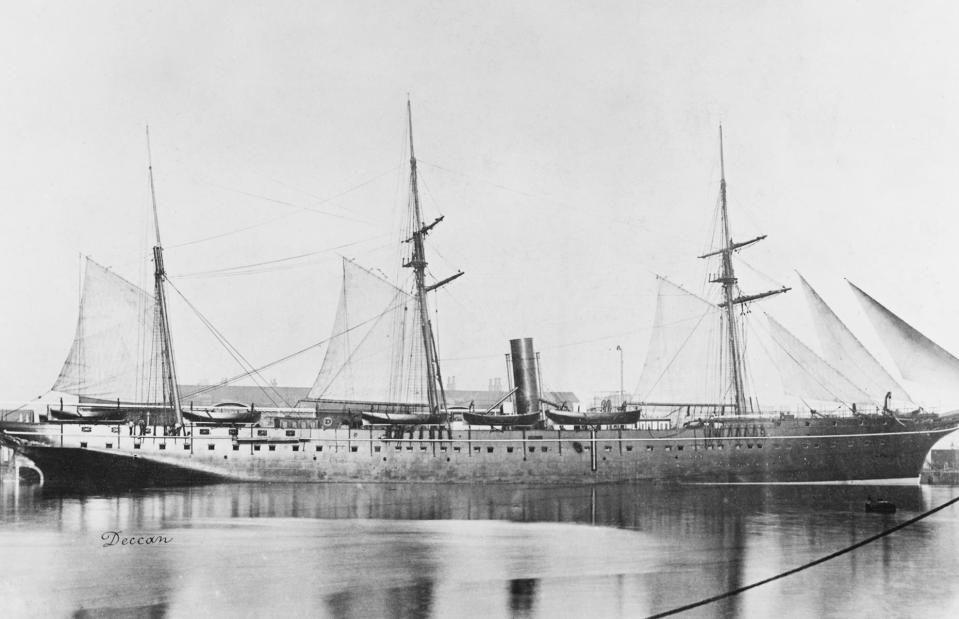
Hulton Archive/Getty Images
In the first half of the 19th century, most people crossed oceans for business rather than leisure – nevertheless, P&O is credited with launching the first pleasure cruises in this era. Boats bound for the Mediterranean struck out from England in 1844, with on-board passengers dreaming of sun, sand and sea. Pictured here is the P&O passenger liner SS Deccan sailing from Southampton a little later in 1870.
1840s: a landmark in cruise-line history
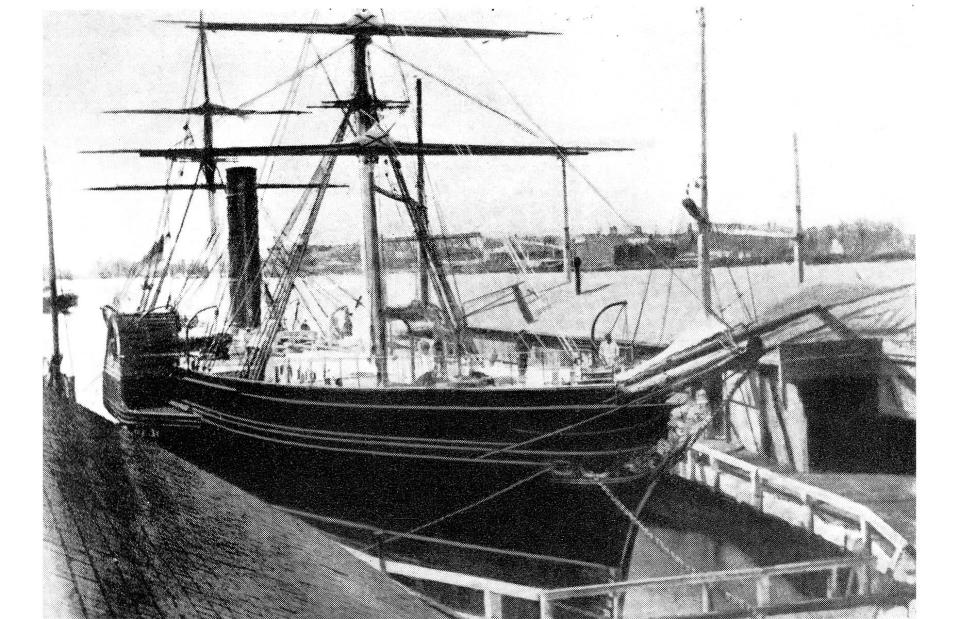
Hulton Archive/Getty Images
This decade also saw some of the biggest names in cruising sail onto the scene. The Cunard Line was founded in 1840, boasting an impressive fleet of steam-powered ships and whisking the likes of Charles Dickens to destinations such as Boston. Pictured here, in 1848, is Europa, one of Cunard's early Atlantic ships. The White Star Line, the operator of the famously ill-fated Titanic, was also founded in 1845.
1850–60s: early developments
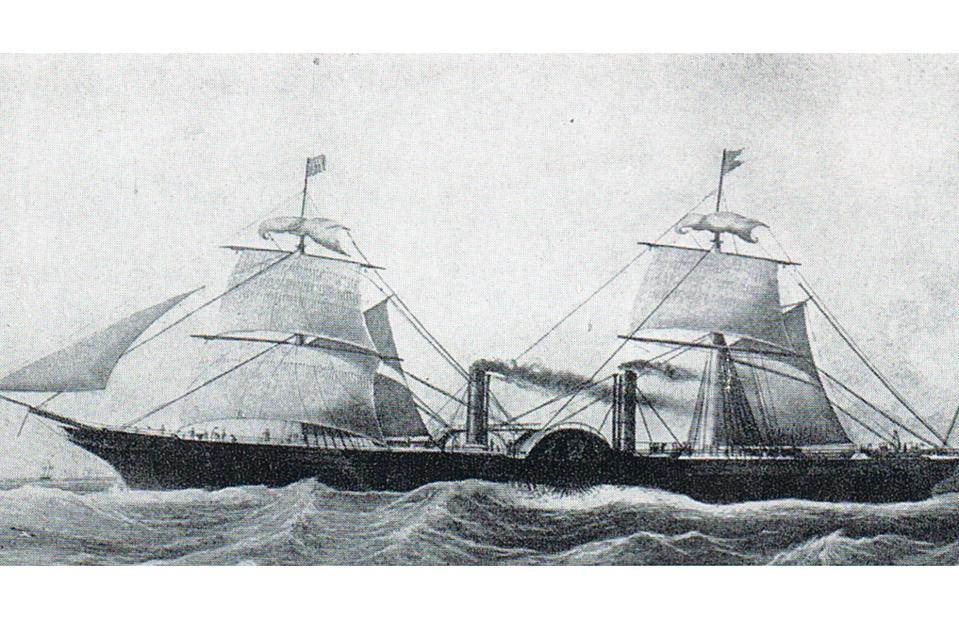
Unknown/Wikimedia Commons/CC0
Passenger cruising continued to develop through the mid-19th century, with luxuries like on-board lounges and simple entertainment emerging. Shown here, in 1856, is Cunard's RMS Persia, one of the largest ships of her time and an early Blue Riband winner (an award given for high-speed Atlantic crossings).
1870s: the New World
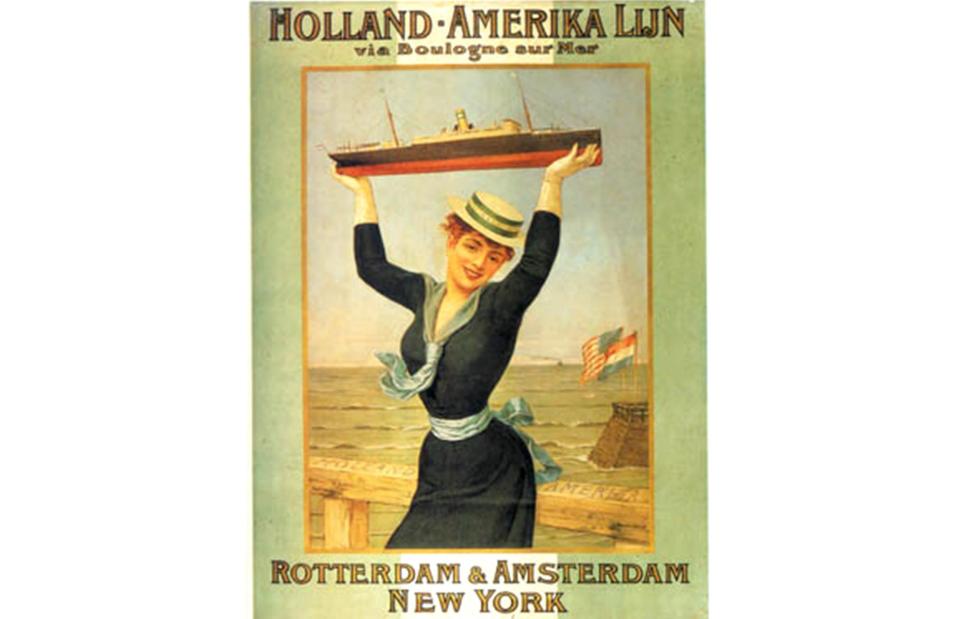
Jan van Beers/Wikimedia Commons/CC0
Business and pleasure weren't the only reasons for taking to the waves, though – in the 1870s, European immigrants were traveling to America in great numbers. Lines like the Holland America Line, launched in 1873, became famous for transporting great waves of people searching for a new life in the New World. This fun advert for the company dates to 1898.
1880s: lighting up the ocean
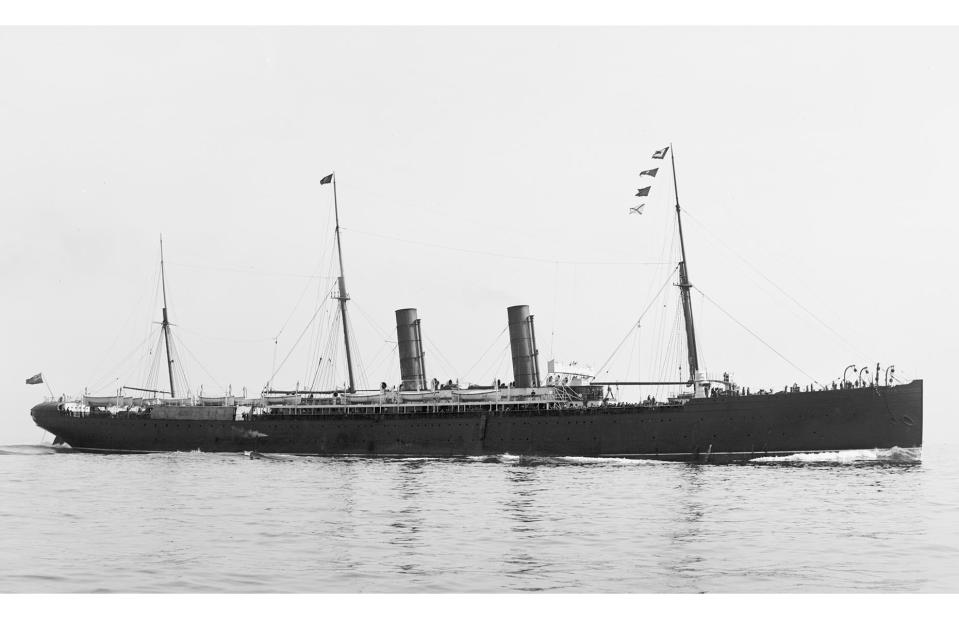
Detroit Publishing Co/Library of Congress/CC0
In the 1880s, now well-established names like Cunard and P&O continued to make waves. Launched in 1881, and pictured here in 1899, SS Servia was the first Cunard passenger ship to function with electric lighting. To many, she represents an early model of today's modern liners.
1890s: “floating palaces”
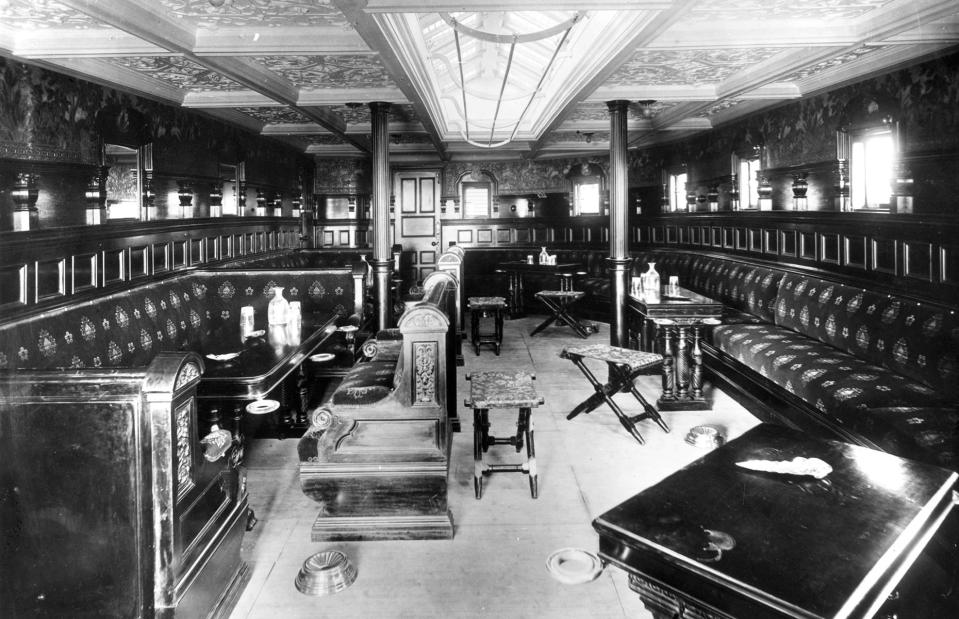
Hulton Archive/Getty Images
By the end of the 19th century, passenger cruise ships had become an exercise in luxury, with Cunard tipping its liners as "floating palaces". Offerings from competitors like P&O were just as lavish: this 1892 snap shows an opulent smoking room on P&O's Himalaya ship. Notice the plush booths, dark carved wood and intricate ceiling reliefs.
1900s: entering cruising’s golden age
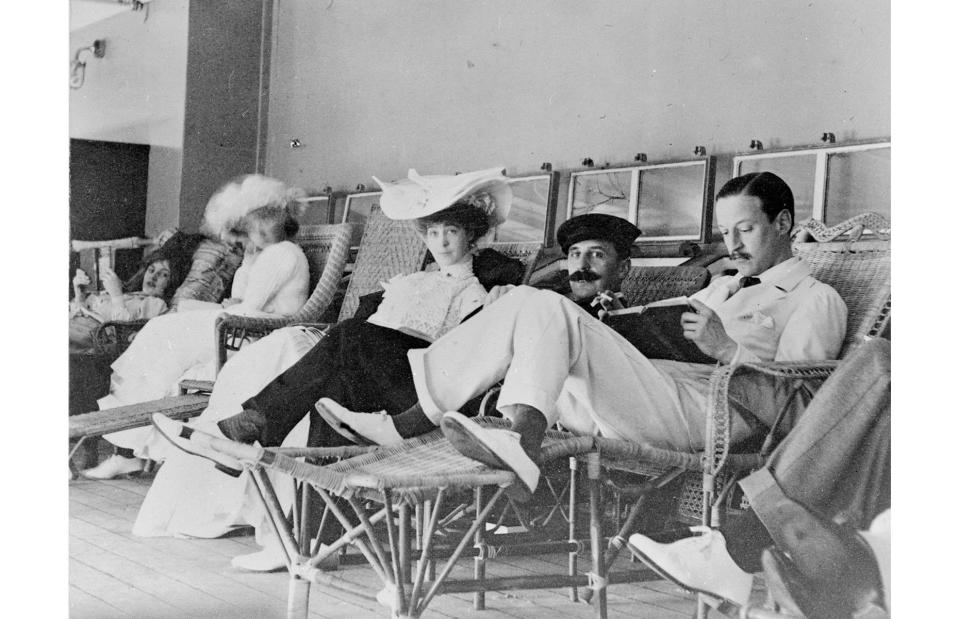
Hulton Archive/Getty Image
The period from the 1900s to the end of the 1930s is what many consider cruising’s golden age. By this point, the journey had become as important as the destination and passengers would don their finery to take to the seas for weeks on end. Here the Duke and Duchess of Marlborough relax on the deck of P&O's Arabia, en route to Mumbai in 1902.
1900s: entering cruising’s golden age
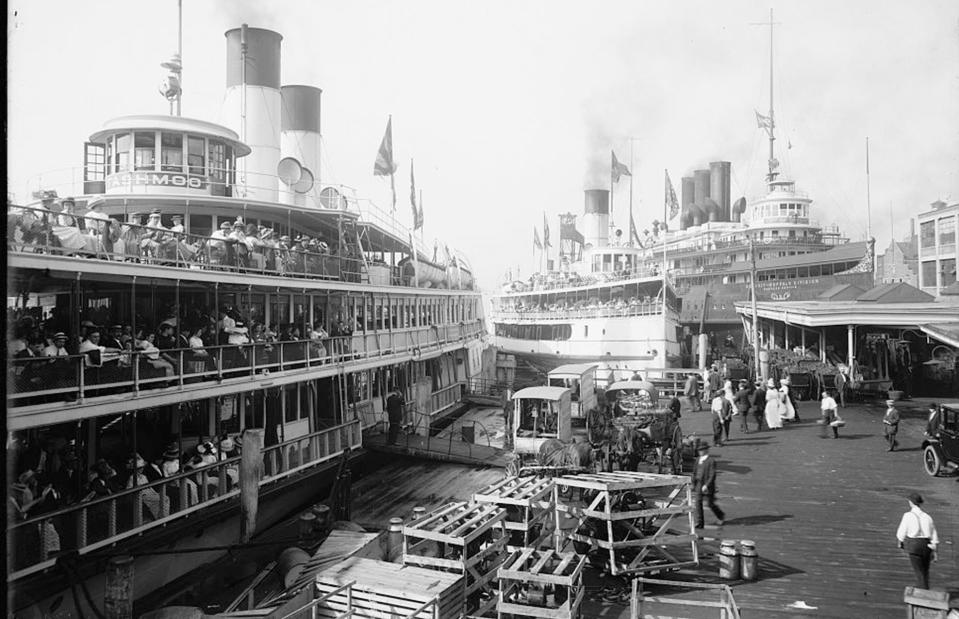
Detroit Publishing Company/Library of Congress/CC0
At the turn of the century, there was still a frisson around cruising and large, buzzy crowds would often gather to see off the ships. This nostalgic photograph was snapped between 1900 and 1915, and shows large steam boats leaving from the White Star Line dock in Detroit, Michigan. Well-dressed passengers fill the ships' upper and lower decks too.
1900s: the first purpose-built cruise ship
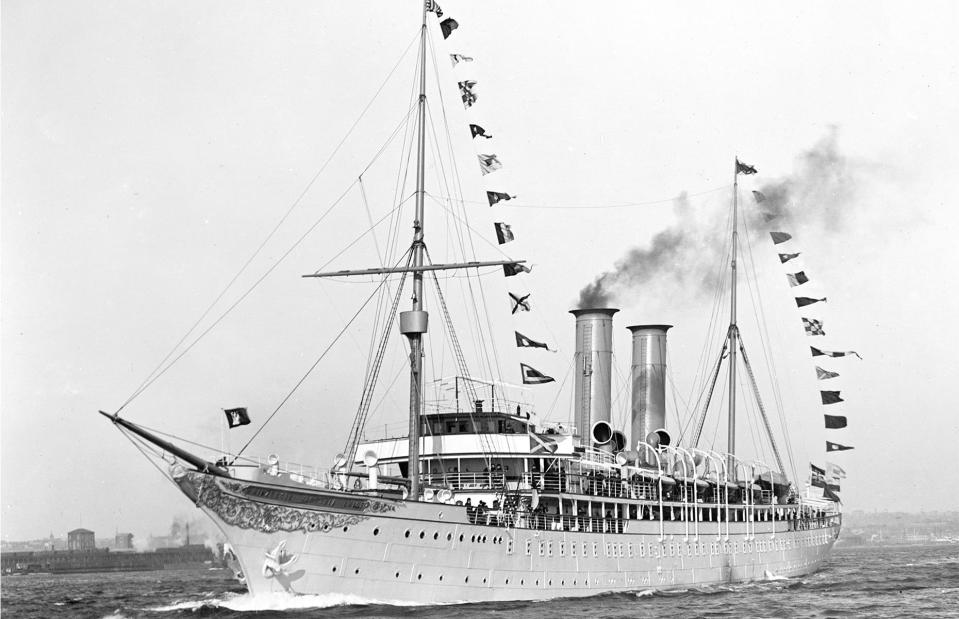
Detroit Publishing Company/Library of Congress/CC0
By the 1900s, passenger cruise services were nothing new. But the Prinzessin Victoria Luise (pictured) – a glamorous ship pioneered by the Hamburg America Line – is generally touted as the first purpose-built cruise ship. Launched in the summer of 1900, she was a grand ship with an ornately decorated bow and lavish interiors complete with luxurious first-class cabins. She came out of service in 1906 when she ran aground.
1910s: onboard entertainment
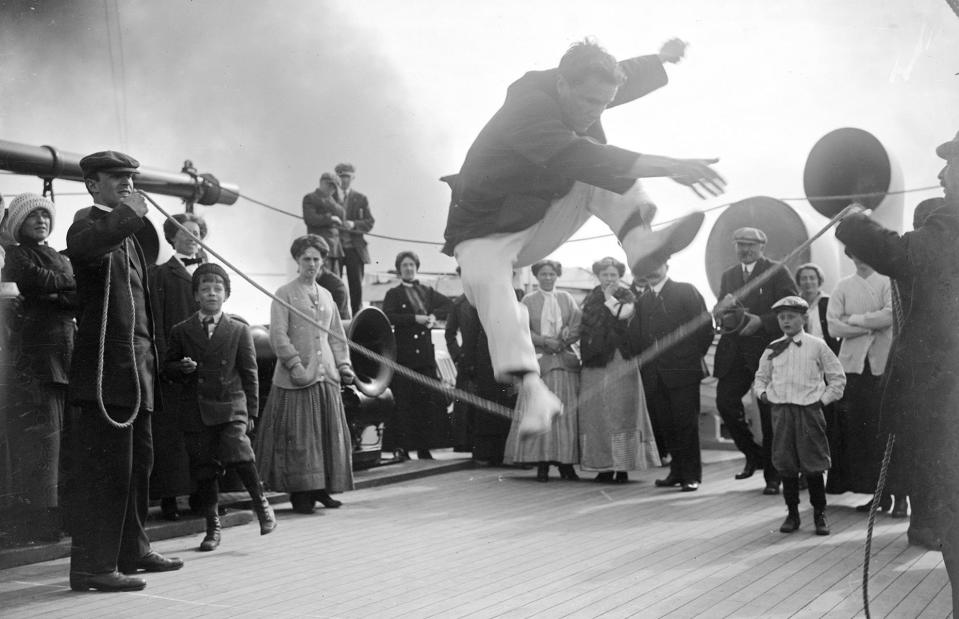
Topical Press Agency/Getty Images
Many early 20th-century cruise ships had plenty of luxury amenities, but the entertainment on offer was a far cry from the glitzy shows and hi-tech attractions we're used to today. Common pastimes included shuffleboard, dancing and games like tug of war. Captured in 1912, these passengers on Cunard's Franconia enjoy a high-jump contest on deck.
1910s: the Titanic disaster
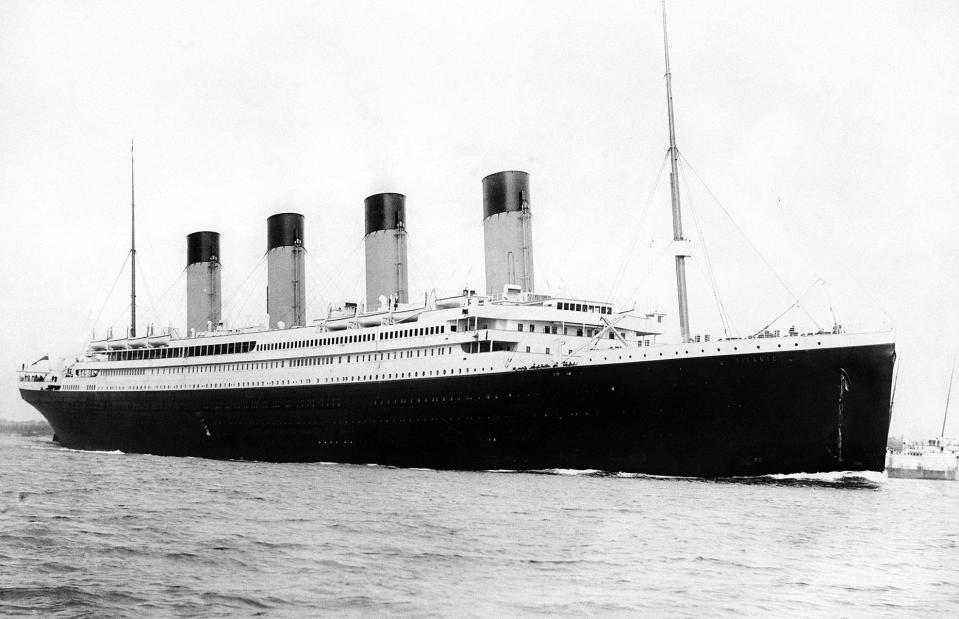
PA/PA Archive/PA Images
One of the most famous and devastating events in cruise history occurred in this decade. Dubbed "unsinkable" by the White Star Line's vice-president, the Titanic set out from Southampton on her maiden voyage on 10 April 1912 to much applause. But just four days later, she collided with an iceberg in the North Atlantic: the compartments in her hull filled with water and she tragically sank. The disaster claimed the lives of more than 1,500 people.
1910s: First World War
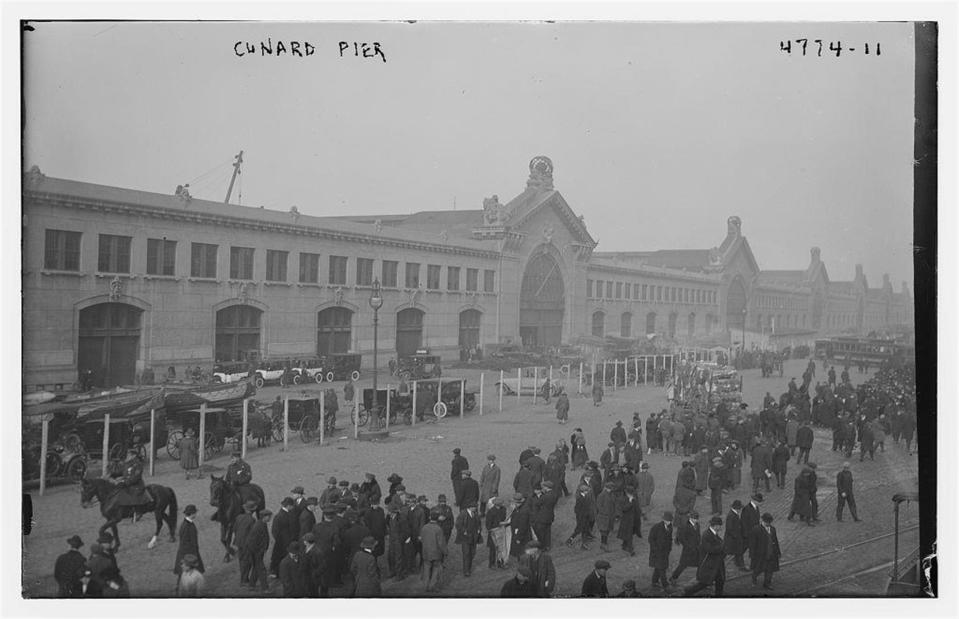
Library of Congress/CC0
Just as cruising was enjoying its heyday, the industry entered troubled waters. The First World War halted progress in commercial cruising as attention was turned to the war effort. Many commercial liners were repurposed as military ships – Fred. Olsen, for example, purportedly lost 23 ships to the conflict. This 1918 photograph shows New York City crowds waiting for the return of Cunard's RMS Mauretania, which was carrying American soldiers back home after the war.
1920s: cruising’s golden age continued
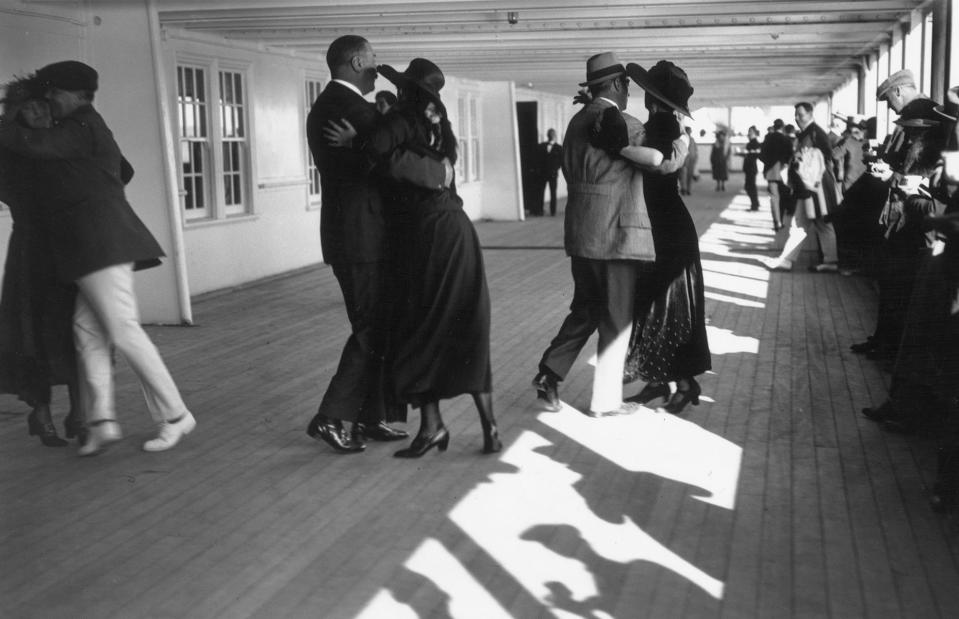
Topical Press Agency/Getty Images
Still, against the odds, the cruise industry managed to keep its head above water and, post-war, the upper echelons of society took to the seas once more. Here affluent travelers dance on the deck of Cunard's Aquitania in 1922.
1920s: cruising’s golden age continued
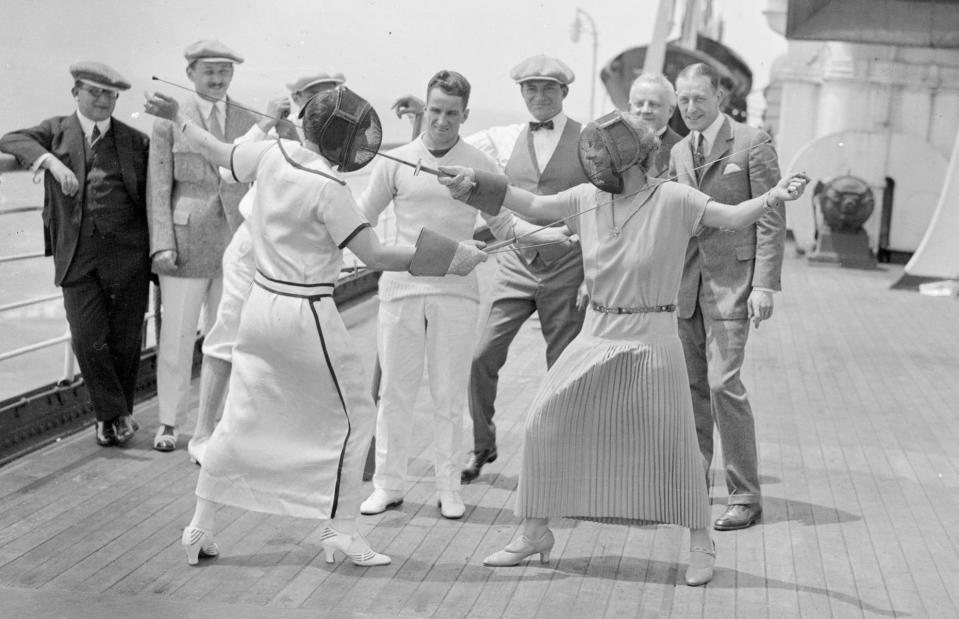
Topical Press Agency/Getty Images
In the Roaring Twenties, onboard entertainment was still focused around fun deck games and sports. Here spectators look on in delight as a pair of women take part in a fencing duel aboard Cunard's Berengaria (formerly Hamburg America Line's Imperator). The shot was taken in 1923.
1920s: setting the bar high
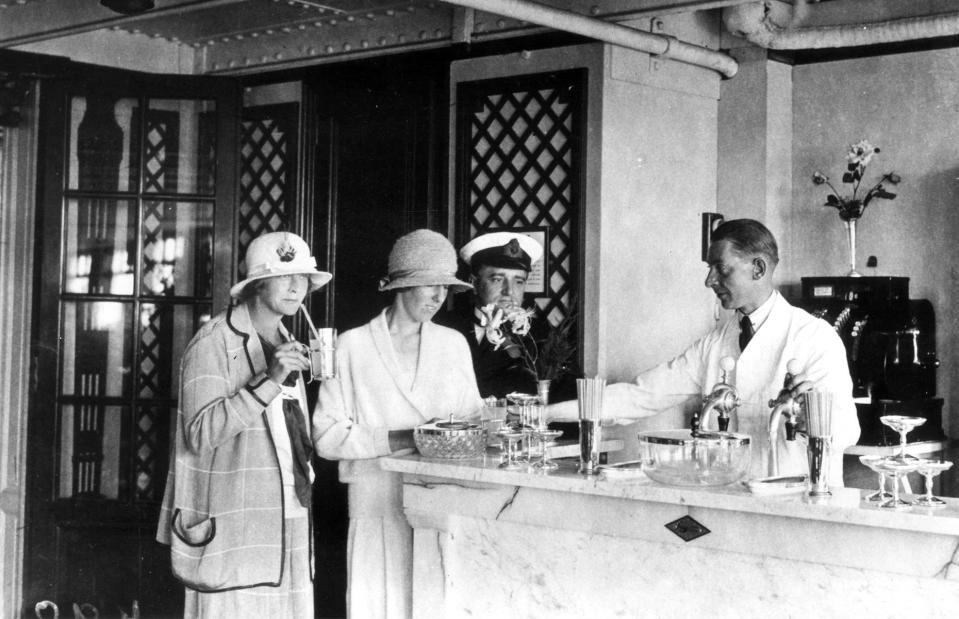
Topical Press Agency/Getty Images
Super plush lounges, dining areas, formal dances and cocktail bars were other things that kept cruise-ship passengers entertained in the golden age. This snap takes us back to 1923 as two well-heeled women sip drinks at the bar onboard the Cunard liner Aquitania.
1920s: a festive feast
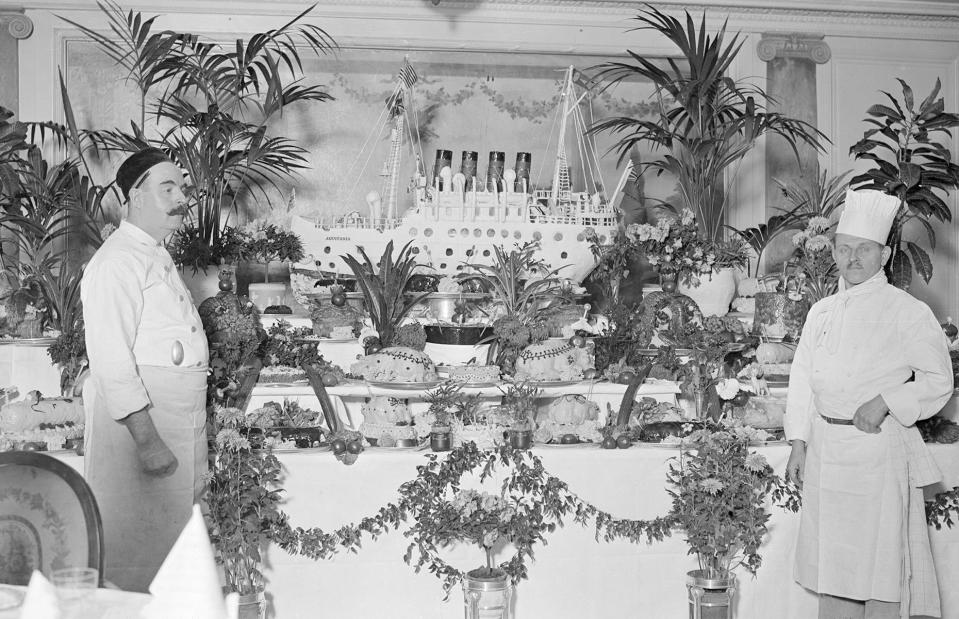
Topical Press Agency/Getty Images
Huge dining rooms and bulging buffets are markers of the modern-day cruise and, in the 1920s, dinnertime was equally important. It was typically a grand affair requiring formal dress and involving course after course of fine food. Here, two chefs on Cunard's Aquitania stand before a splendid festive spread – the star is the giant cake in the shape of the ship.
1920s: the first round-the-world cruise
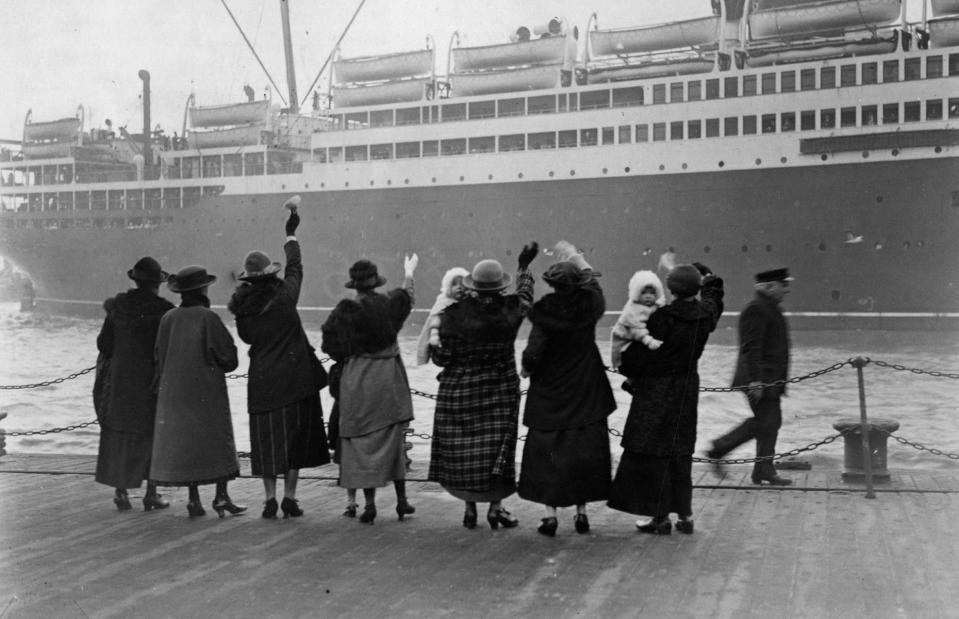
Topical Press Agency/Getty Images
Another major milestone came in the 1920s: the very first round-the-world cruise. The Cunard Line's RMS Laconia (pictured here leaving Liverpool circa 1920) sailed around the globe in 1922, calling at 22 ports along the way, and taking 450 lucky passengers with her.
1930s: all games on deck
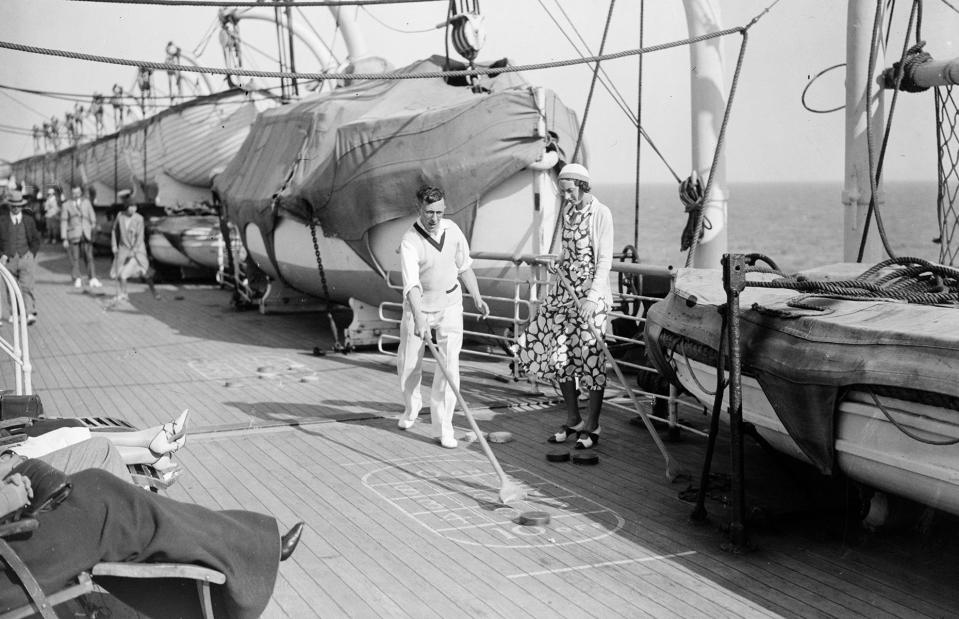
Fox Photos/Getty Images
The 1930s unfolded in much the same way as the decades previous, as the golden age of cruising continued: think deck games, dinners and dances. The king of all cruise-ship hobbies was shuffleboard, a game that's still often played on modern-day liners. Here, a couple enjoy a game on a cruise to Gibraltar on Cunard's Aquitania in 1932.
1930s: making a splash
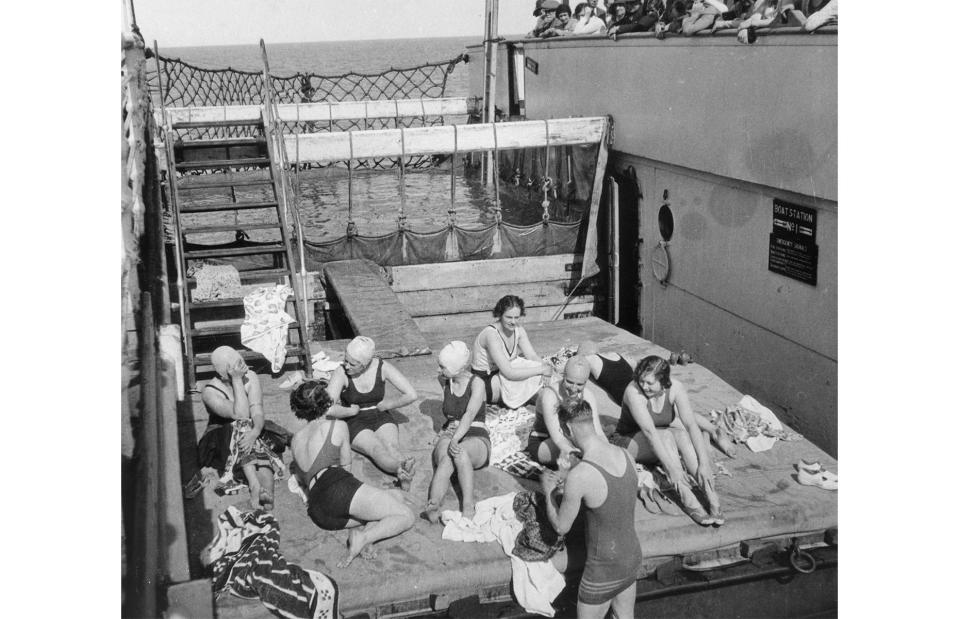
The Print Collector/Print Collector/Getty Images
Today mammoth sun-bed-lined swimming pools – often with twirling water slides for kids – are a cruise-ship staple. But in the first half of the 20th century they were much humbler indeed. It's thought that the earliest cruise-ship swimming pool was installed in 1907, on the White Star Line's Adriatic, but they didn't become commonplace until later. Here passengers sunbathe next to a compact swimming pool onboard a Cunard cruise to the West Indies in 1931.
1940s: post-war cruising
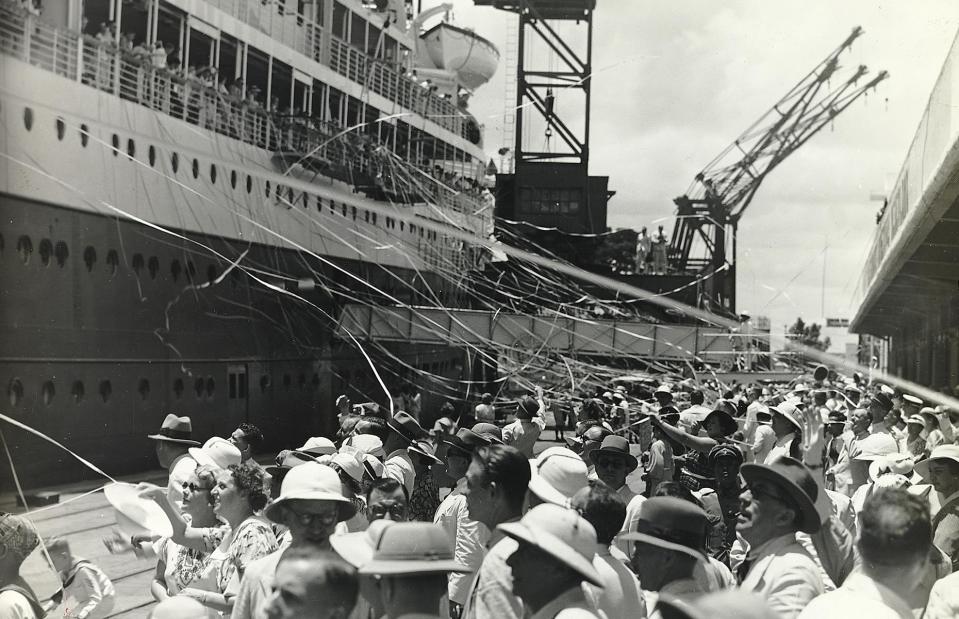
Bettmann/Getty Images
The Second World War was another blow to commercial cruising: yet again, liners were repurposed as war vessels and pleasure cruising came to an abrupt halt. By the end of the decade, though, surviving ships were returned to their lines and put back into service. Slowly but surely, the appetite for cruising grew again. Here an excited crowd welcomes a ship at a Java seaport in the 1940s.
1950s: the post-war decades
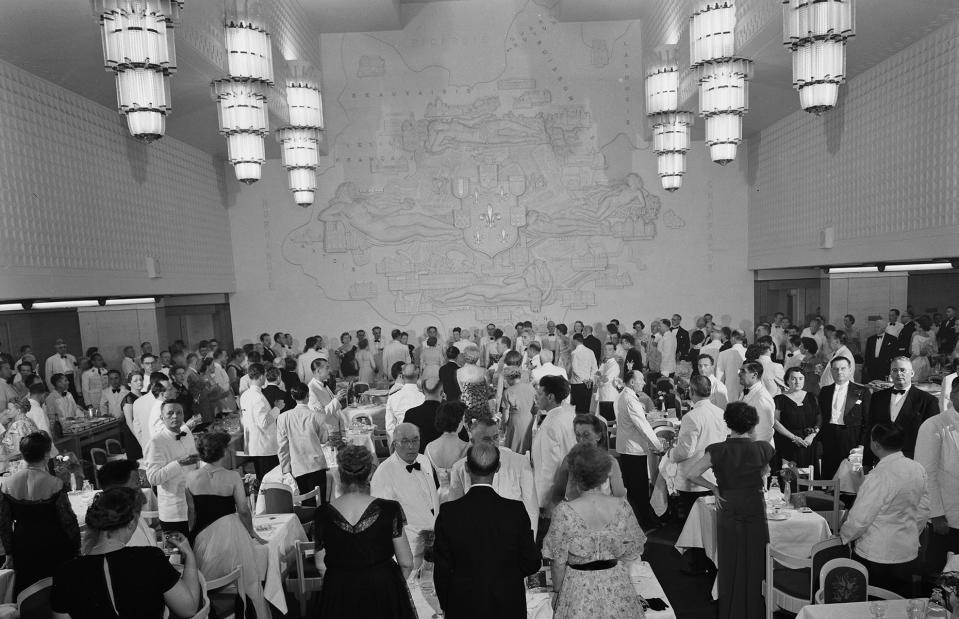
Graphic House/Archive Photos/Getty Images
Come the 1950s, cruise ships had another phenomenon to compete with: jet planes. Commercial air travel boomed in this decade, with comfier aircraft and improved routes enticing travelers into the skies. Many cruise liners underwent swish post-war refits in an attempt to stay afloat: this 1950s photo shows the opulent dining room of French liner SS Île de France after a dramatic post-war makeover.
1950s: going Down Under
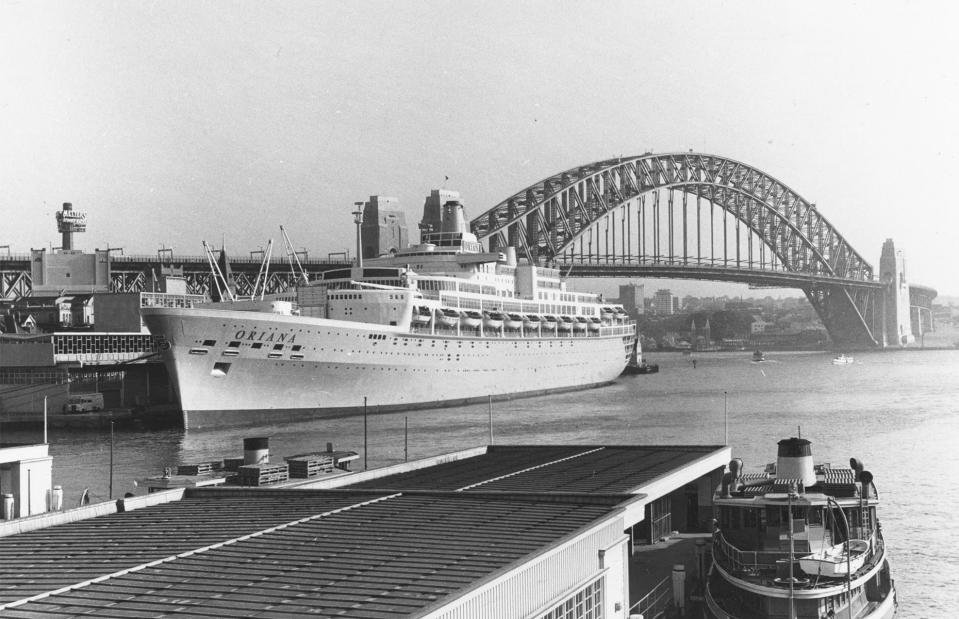
John Titchen/Three Lions/Getty Images
There was one destination that proved particularly popular in the post-war decades, though. After the conflict, many Europeans decided to make a new life Down Under, with millions cruising to Oz on time-honored lines like P&O between the 1940s and the 1970s. P&O ship Oriana is pictured here in Circular Quay, Sydney circa 1950.
1950s: the Blue Riband record breaker
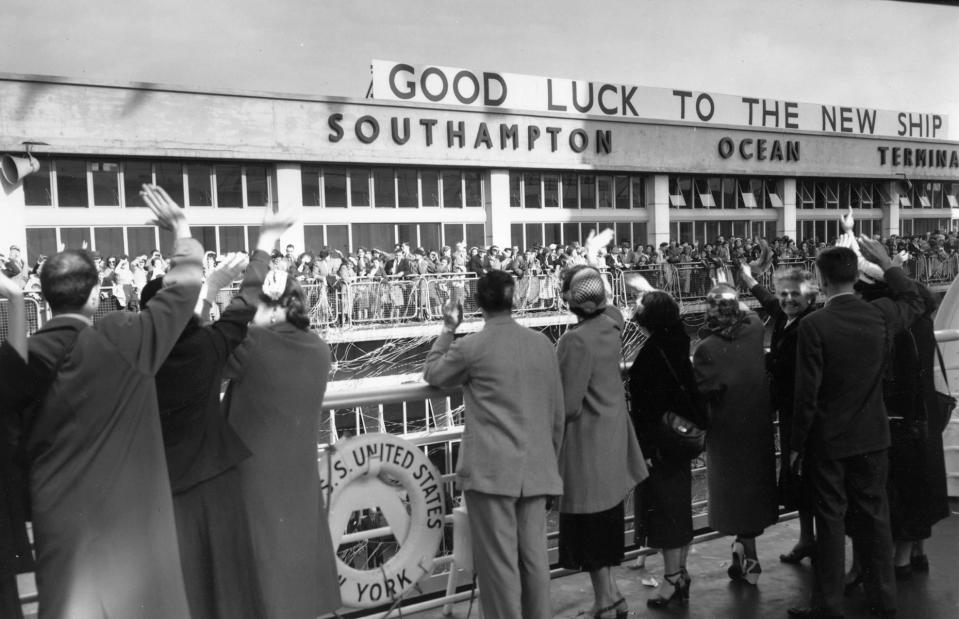
M. Fresco/Topical Press Agency/Getty Images
Though formalized in the 1930s, the Blue Riband – the award for the passenger cruise liner with the fastest Atlantic-crossing time – has its roots right back in the 19th century. The record is still held by SS United States of United States Lines, which first sped across the Atlantic in 1952. She's pictured here on 9 July 1952, docking in Southampton.
1960s: the Jet Age
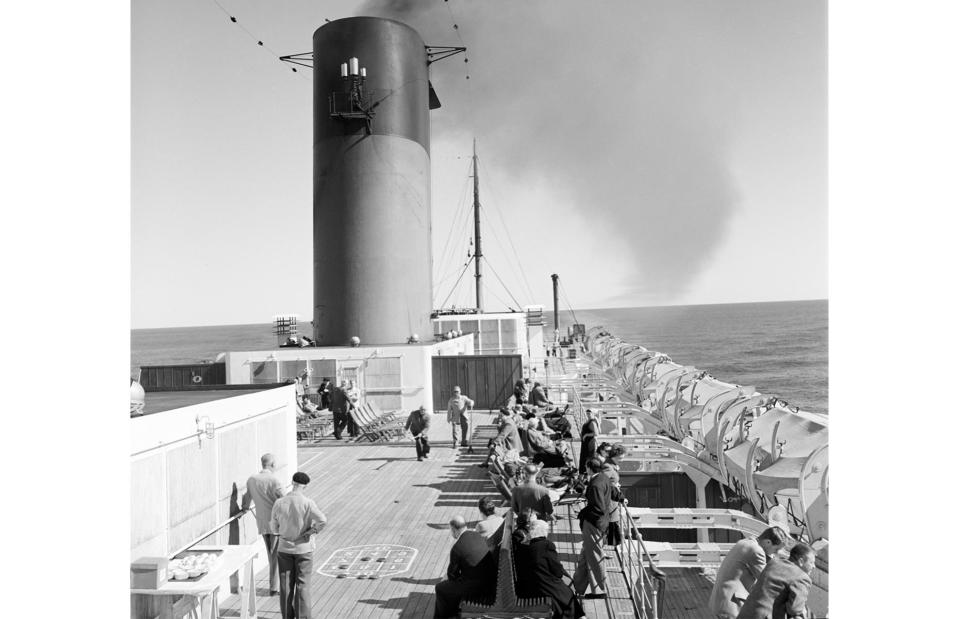
H. Armstrong Roberts/ClassicStock/Getty Images
By the 1960s, the Jet Age had well and truly taken hold, and fewer and fewer passengers were choosing to make trans-Atlantic journeys by boat. Still, though, that didn't stop some major players in the cruise world from launching. The decade saw the founding of brands including Norwegian Cruise Line, Royal Caribbean and Princess Cruises. This vintage 1960s snap shows the already established SS Île de France sailing for the Compagnie Générale Transatlantique.
1970s: The Love Boat
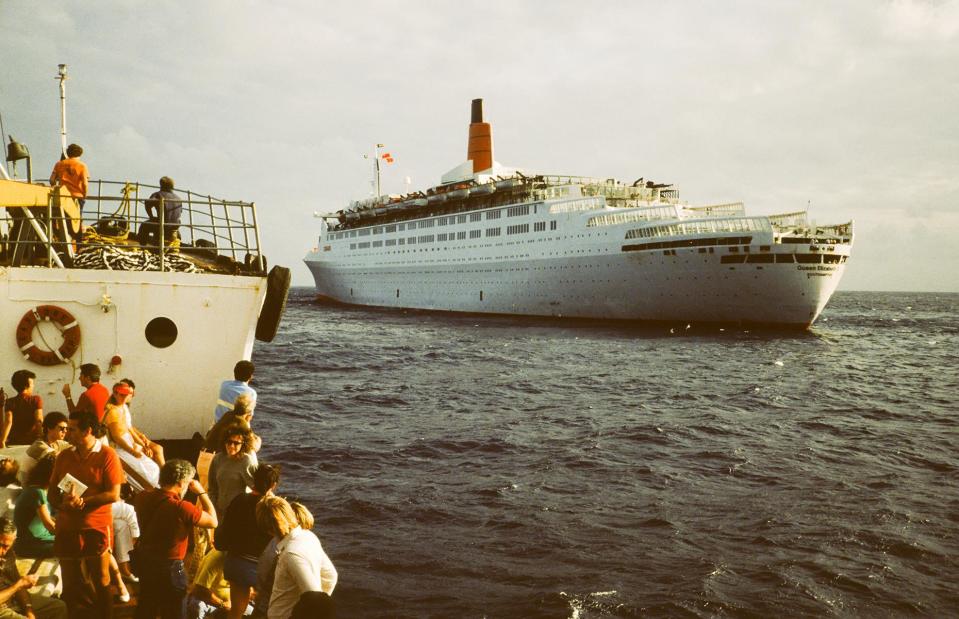
Smith Collection/Gado/Getty Images
As flying became more commonplace, the popularity of cruising looked set to dwindle. However, one particular TV series is often credited with keeping travelers' passion for cruising alive. The Love Boat – aired from the 1970s – was a comedy series that followed the crew and passengers of luxury liner SS Pacific Princess. Such was its popularity, some say it brought cruising back into the mainstream once more. This shot shows Cunard Line's Queen Elizabeth 2 in 1975.
1970s: cruising opens up to the masses
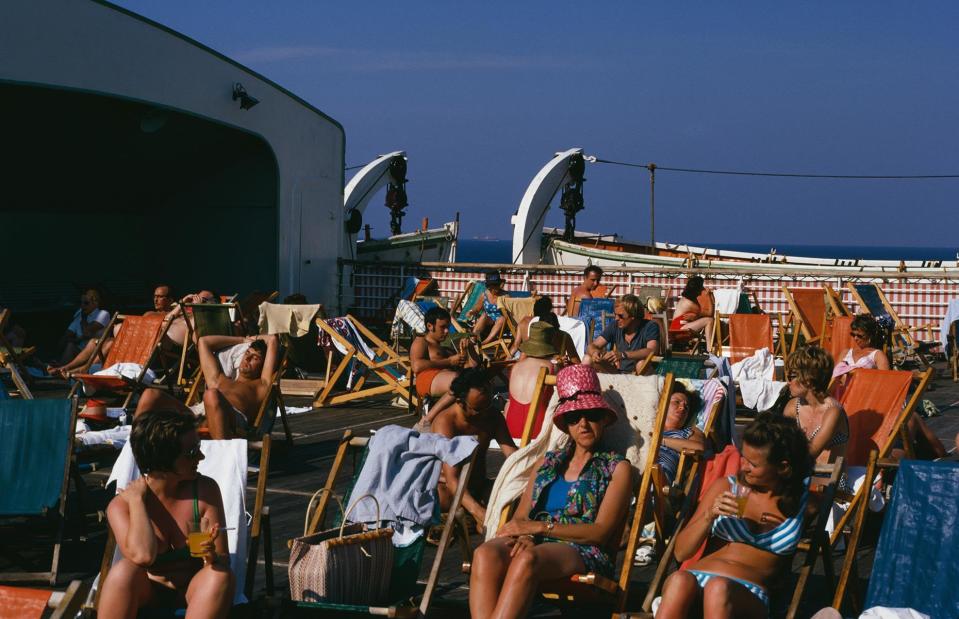
Garry Hogg/Stringer/Getty Images
By the 1970s, lower costs meant that cruising had opened up to the masses. But the invention of the jumbo jet meant air travel had too, and the latter was the quicker, more convenient choice for traveling overseas. Therefore, the cruise reinvented itself. Ships were no longer marketed as a way to get from A to B, they were destinations in themselves, and the "leisure cruise" was its own phenomena. Here passengers enjoy the deck of P&O's SS Oronsay in 1975.
1980s: the cruise to nowhere
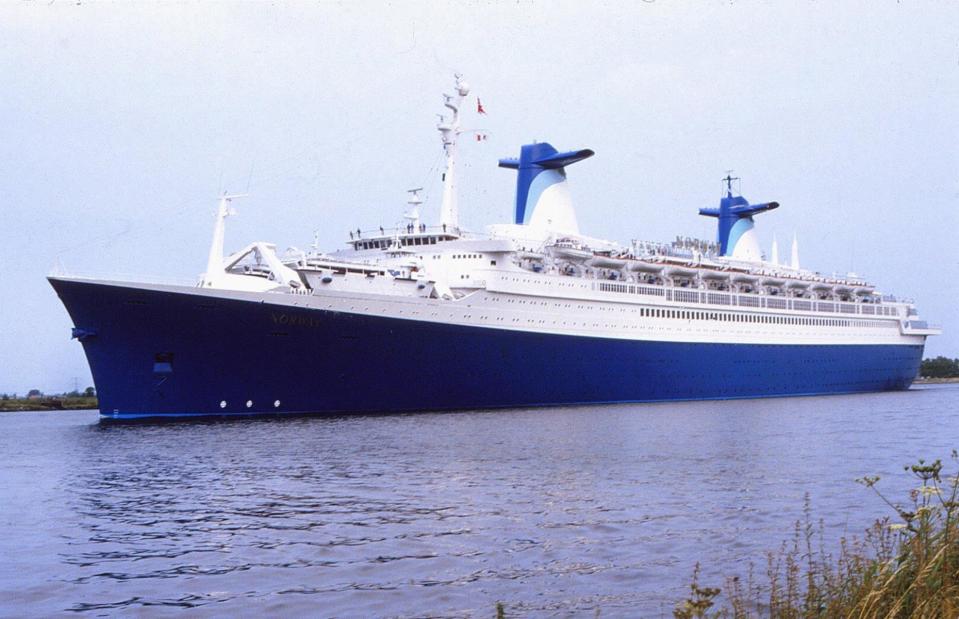
Joost J Bakker/Wikimedia Commons/CC BY 2.0
The 1980s is thought to be the decade that pioneered the "cruise to nowhere", where the ship really was the destination. The SS Norway (pictured) – a lavish mega ship with room for thousands of passengers and amenities like a casino – embarked on a no-docking cruise in this decade.
1990s: Disney takes to the water
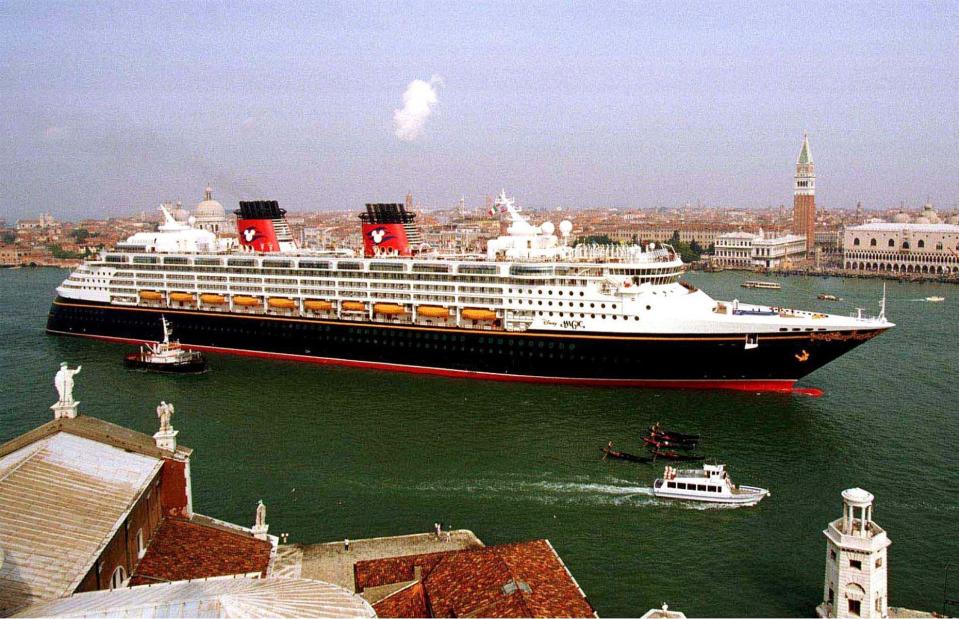
James Morgan/PA Archive/PA Images
By the 1990s Disney was spreading a little magic at sea. Disney Magic, a bold ship with black, yellow and red detailing à la Mickey Mouse, made its maiden voyage in 1998. It's pictured here that same year, cruising through Venice, and is still sailing today, complete with a spa, pools and plenty of shops and themed dining rooms.
2000s: making waves in the modern world
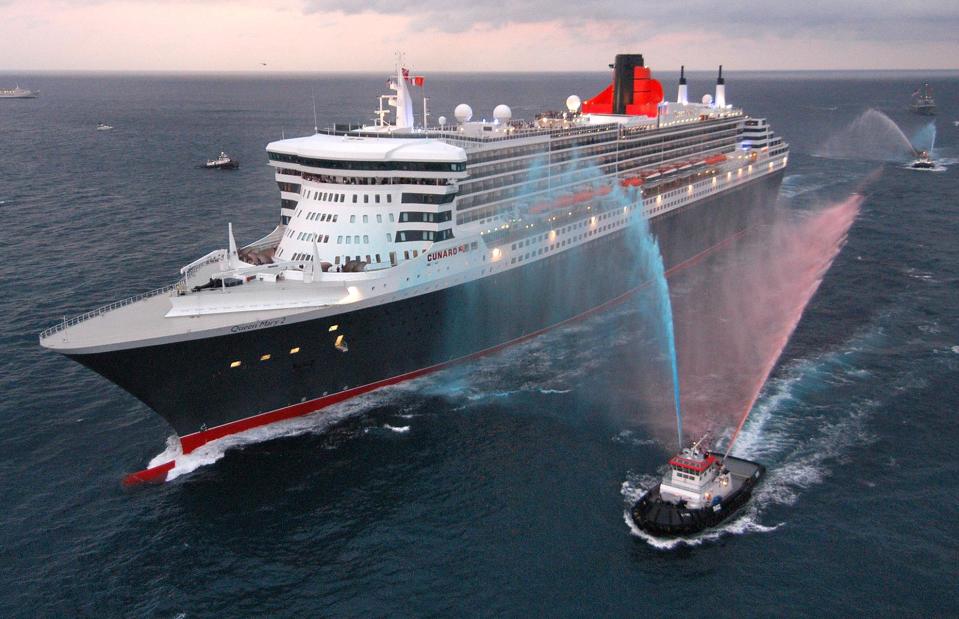
Andy Newman/Cunard Line/Getty Image
The 2000s saw larger-than-life, no-expense-spared, mega cruise ships sail onto the scene. This sunset snap shows Cunard Line's Queen Mary II as she completes her first trans-Atlantic voyage in January 2004. At this time, she was the largest and most expensive cruise ship ever constructed with room for 2,200-plus passengers, a theater and even a planetarium, setting the bar for the ships of posterity.
2010s: bigger, better and healthier
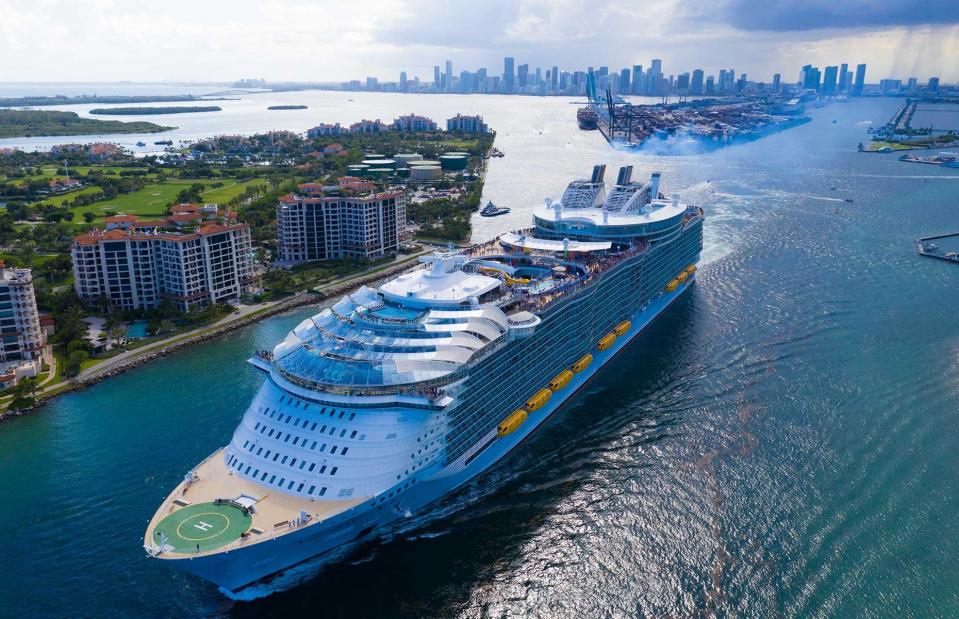
danmiami/Shutterstock
Cruise ships continued to expand in the 2010s while cruising itself became the fastest-growing category in the leisure travel market. Royal Caribbean’s Symphony of the Seas (pictured here) launched in 2018 as the largest cruise ship in the world (until 2022). The tide began to turn on sustainability, with several cruise ships built to run on liquefied natural gas and battery power. Another health-based factor was reducing onboard smoking to selected areas only.
2020s: off to a rocky start
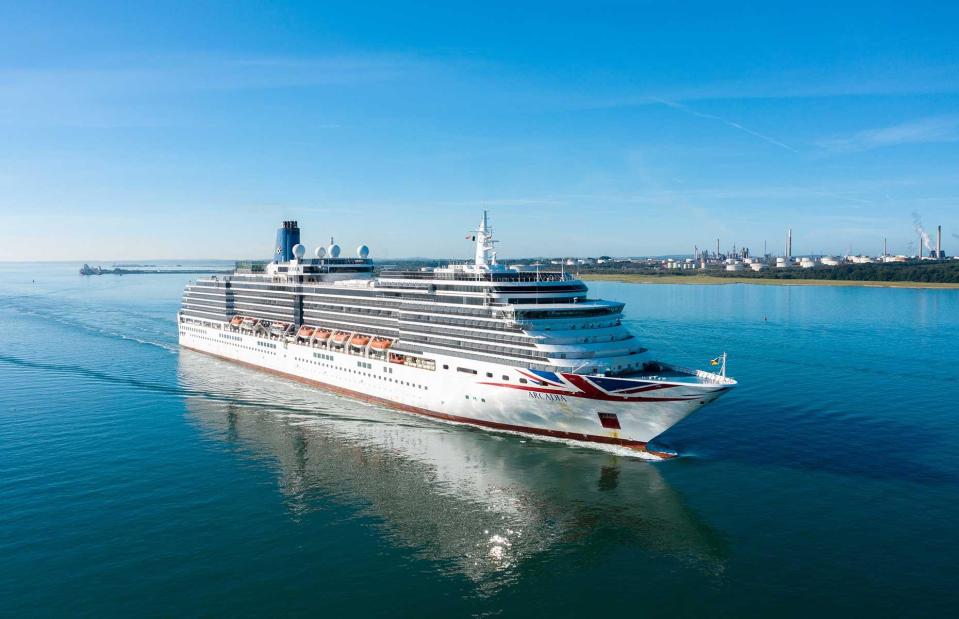
Wayleebird/Shutterstock
The 2020s got off to an eventful start. The COVID-19 pandemic halted almost all cruises, with some passengers and crew marooned onboard while testing and entry protocols were debated. In 2021 rife cancellations, last-minute border changes and variant outbreaks persisted. However, 2022 has indicated a return to pre-pandemic popularity, with 300 cruise ships departing in April – pretty impressive compared to just 22 departing in April 2021. Cruise lines have incorporated more health and safety protocols, such as advising passengers to control their TV, light and temperature via an app instead of touchpoints.
If this has floated your boat, here's where to see the world's most famous ships

